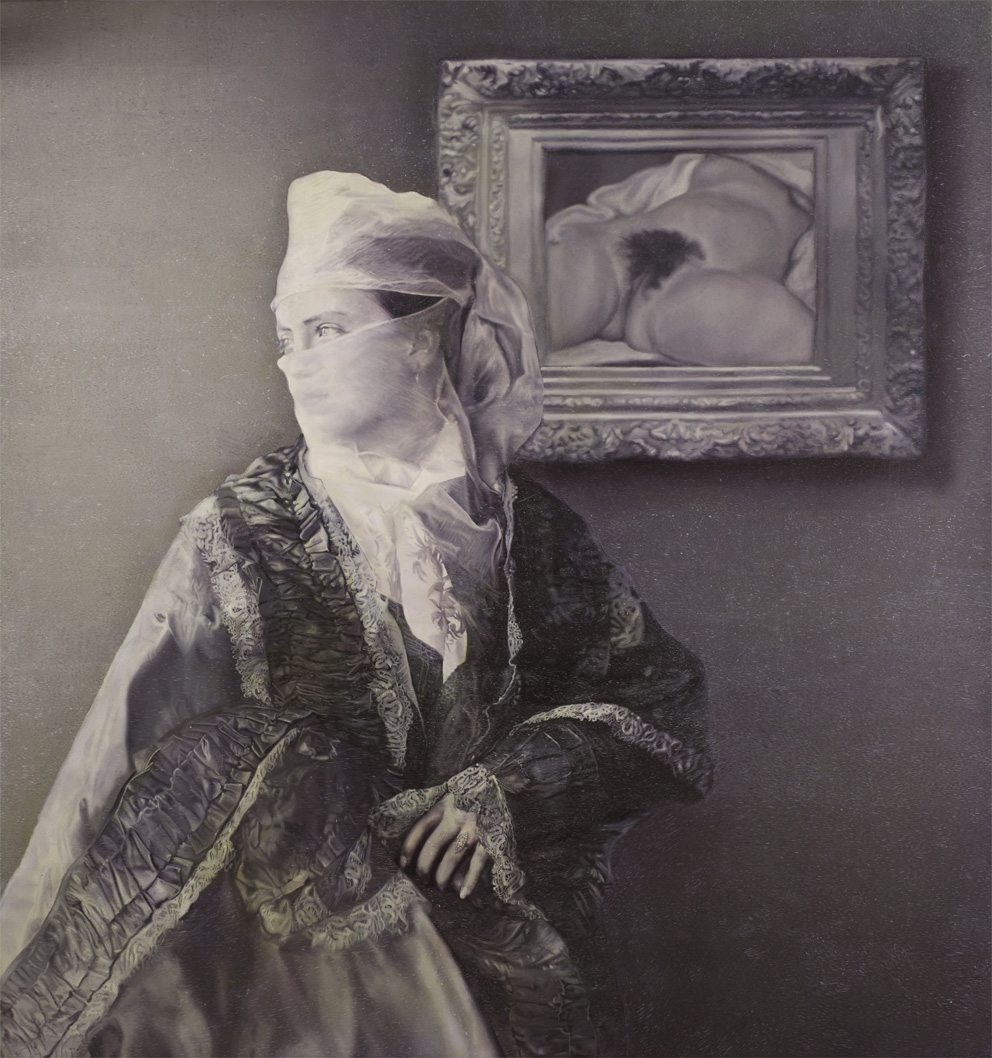Disoriented paintings
The way of Taner Ceylan

Taner Ceylan is known throughout Turkey’s contemporary art scene as the “rich” artist whose paintings sell for hundreds of thousands of lira. He currently lives and works in Istanbul, where he is preparing for his new series, “Golden Age”. An exhibition of his paintings, “Lost Paintings”, is slated to open in London later in the year.
But there is more to Celyan than the huge price tags fetched at auction by his paintings — such as “Cage of Flesh” (sold for 121,000 pounds last April at Sotheby’s), which depicts the soul’s captivity in the body, and the earlier “1879” (sold for 300,000 pounds in April 2011 at Sotheby’s), which portrays an Ottoman woman in front of Gustave Courbet’s “L’Origine du monde” (most probably named after the year of the death of Halil Şerif Paşa, an Ottoman diplomat who commissioned the painting — Ed.).
“It is not easy to become successful in this [art] world, because this is a wild world,” he says. According to Ceylan the road to success is a long one. “However, I should say that I tried hard”, he adds. Ceylan spent a long time earning no money and discovering his identity.
During this time, says Ceylan, “people in the Turkish art scene categorized me. First they said, ‘Dangerous artist,’ because I made a performance show titled ‘The Monte Carlo Style’ in which I invited Istanbul’s high society to a ‘fake’ party, at which I showed my own paintings.”
He put on the show with few friends, attended the party himself (dressed up and in makeup), and at the end of the performance sold his all paintings.
“This was the breakout point in my artistic life. I was in the market for five years and sold nothing, and at last I decided to do something like this with a few friends. We made fake invitations and invited everyone.” He adds: “If you are doing something like this, it means that you have no other expectations. I took a risk”.
Next Ceylan was labelled the “inappropriate artist,” because of his homoerotic paintings and his 1994 exhibition “Young Osman”, which he described as an entry into “the homoerotic world of Ottoman culture”.

Ceylan’s paintings from 1997 to 2009 are striking and bold, reflecting Ottoman culture, eroticism, love, beauty, sexual seductiveness, exoticism and pornography. His paintings may be read as depicting different themes from life; love, pain, life, society, hope, identity and reality.
All this relates back to Ceylan’s discovery of his homosexuality. “The last year of the academy (1991 — Ed.) I discovered my real identity. It was very hard for me to accept.”
His discovery was reflected in his art, and he started to depict homoerotic scenes in his paintings.
However, it seems that this phase in his art may have come to an end, as Ceylan says he feels the nude period is over for him. “I can’t say that I will never draw nudes again. But as an artist you can never fool yourself”.
Ceylan’s comments on the new phase in his art came as he discussed his latest series, “Lost Paintings,” which he will be showing in London later in the year. “It is very hard for me to open another exhibition in Turkey and the ‘Lost Paintings’ series has never been shown together. I have chosen to open the exhibition in another city.”
The reason Ceylan refuses to open a new exhibition in Istanbul is related to the controversy stirred up by “1879”. “After the painting was exhibited, I received death threats. I lived with state protection for three to four months. Because there are certain people who think that an Ottoman woman cannot be in the same scene as a nude portrait or with a nude painting,” says Ceylan.
According to Ceylan everyone has a romanticised idea of the Ottoman period. However, in “Lost Paintings” Ceylan tries to depict the opposite, bucking the orientalist trend. “There are many beautiful women, and also the harem, which are depicted in orientalist paintings. However, they have nothing to do with reality,” says Ceylan. “The paintings always reflected a fairy tale. However, when we enter Topkapı Palace we can see their rooms, which are three by one metres.”
The main inspiration for “Lost Paintings” was Gülsün Karamustafa’s “Fragmenting – Fragments”. In this Karamustafa made tiles from the paintings of orientalist painters.
Next for Ceylan is a new series, “Golden Age,” in which he aims to portray the soul and “being” allegorically. In fact his last painting “Cage of Flesh” addressed these same topics. This quest was also present in his previous works such as “Alp on a White Background”, currently on show in Amsterdam at the Museum Boijmans Van Beuningen along with other Turkish works from the Istanbul Modern collection.

Edited by Helen Southcott.
2 thoughts on “Disoriented paintings”
Leave a Reply
You must be logged in to post a comment.







“Cage of Flesh” It transcends the anatomical part of a female body. A picture of subtle saturation, and a suave’ rendition of physiological details. Evident on the surface: the almost protruding ribs and bones. It can awaken the sensualist assertiveness of a male brain.
It features the gentle, elegant and vigorous character of a woman, a pure exhibition of hyper-feminity, so fragile yet provocative with a hint of salivating desire, ripe with amatory female pleasure and aggression. A body enveloped in an erotic fantasy in a sense of beauty and strong physicality.